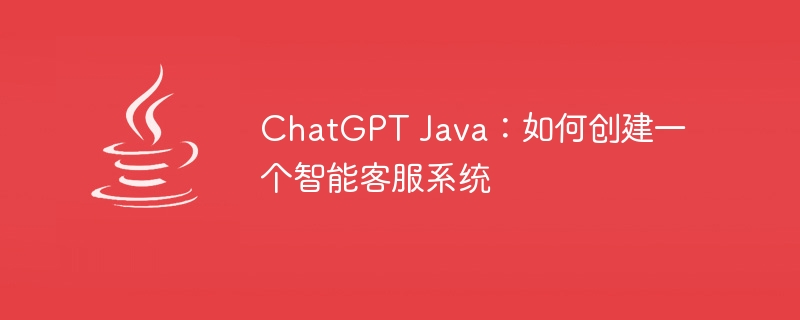

ChatGPT Java: How to create an intelligent customer service system, specific code examples are required
Introduction:
With the continuous development of artificial intelligence technology, intelligent Customer service systems are becoming increasingly popular in the business world. It can automatically answer users' questions, provide instant help and support, save human resources for enterprises and improve operational efficiency. This article will introduce how to use the Java programming language to create an intelligent customer service system based on ChatGPT, and demonstrate the implementation process through specific code examples.
1. Preparation
2. Create ChatGPT customer service system
The following are the steps to create ChatGPT customer service system:
import ai.gigasource.chatgpt.ChatGPT; import ai.gigasource.chatgpt.ChatGPTException; import ai.gigasource.chatgpt.Config; import ai.gigasource.chatgpt.Conversation; import ai.gigasource.chatgpt.enums.ConversationRole;
ChatGPT chatGPT = new ChatGPT(Config.builder() .withApiKey("YOUR_API_KEY") .build());
Please note to replace "YOUR_API_KEY" with your ChatGPT API key.
Conversation conversation = new Conversation(); conversation.addRole(new ConversationRole("system")); conversation.addRole(new ConversationRole("user")); String userInput = "你好,我有一个问题..."; while (true) { try { conversation.getRole("user").addMessage(userInput); List reply = chatGPT.generateReply(conversation); String systemReply = reply.get(0); // 获取系统角色的回复 String userReply = reply.get(1); // 获取用户角色的回复 System.out.println("系统回复:" + systemReply); System.out.println("你的回复:" + userReply); userInput = getUserInput(); // 从标准输入获取用户的下一个输入 } catch (ChatGPTException ex) { System.out.println("ChatGPT 错误:" + ex.getMessage()); } }
The above code will create a conversation and continuously iterate the interaction between the user and the system through a loop. Through thechatGPT.generateReply(conversation)method, the system will generate the next reply and then print it to the console to display to the user.
public static String getUserInput() { Scanner scanner = new Scanner(System.in); System.out.println("请输入你的问题:"); return scanner.nextLine(); }
This method is used to get the user's question or reply from standard input.
3. Summary
Through the above steps, we successfully used the Java programming language to create an intelligent customer service system based on ChatGPT. The system can accept user input, generate responses through the ChatGPT API, and display the responses to the user. By using the powerful natural language processing capabilities provided by ChatGPT, we can build a smarter and more efficient customer service experience to meet user needs.
It should be noted that since ChatGPT is a machine learning-based model, its responses may not always be accurate or satisfactory. Therefore, in practical applications, we also need to continuously optimize and improve the system to improve its performance and user experience.
I hope this article can help you understand how to create an intelligent customer service system, and help you better understand the process through specific code examples. I wish you success in developing an intelligent customer service system!
The above is the detailed content of ChatGPT Java: How to create an intelligent customer service system. For more information, please follow other related articles on the PHP Chinese website!